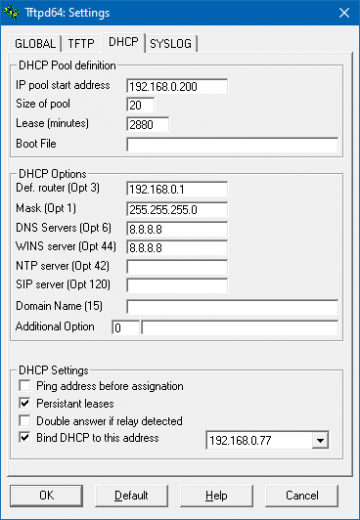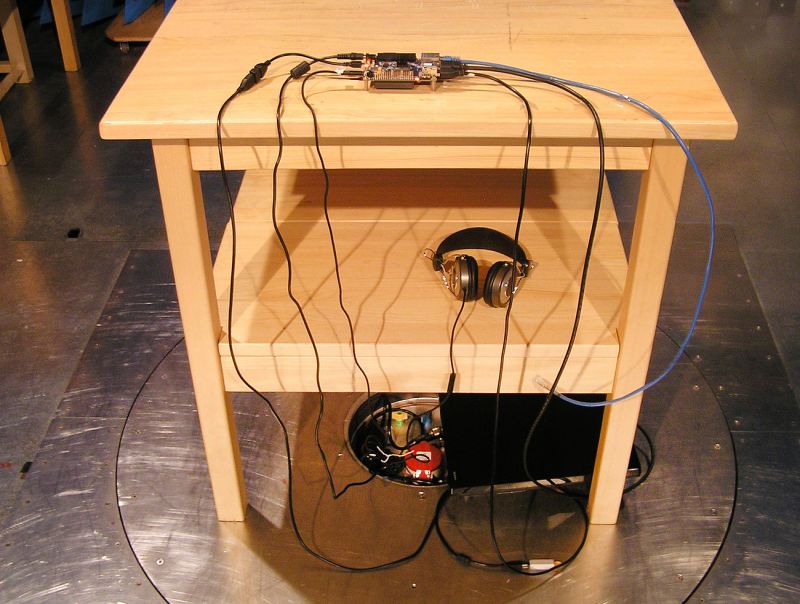iMX6 OpenRex EMC testing
Electromagnetic compatibility results for iMX6 OpenRex SBC are shown on this page. Test setup and scripts are described in details.
These measurements were performed with the standard webshop configurations of the SBC, using actual hardware and software.
Connected cables/devices
- Power jack: +5V power supply which is among recommended accessories for iMX6 OpenRex SBC
- SD card (Sandisk): preloaded with filesystem, used for booting and for read/write test
- Ethernet: 1 meter CAT Ethernet loopback cable connected. Forced to 100Mb and used for ping test
- HDMI monitor: connected through 1.8m HDMI cable, monitor plugged into power but turned off.
- 2x USB flash drive: each connected through a 2m extension cable. Both used during read/write test
- USB micro to USB adapter: USB micro connector is set as a host and used during USB memory read/write test
- Wifi PCIE mini card: inserted, but not actively used. No antennas connected
- Debug cable: FTDI TTL-3V3 UART to USB cable, used only to setup the board, not used and not plugged in during the measurements
- Headphones and microphone: headphones with microphone connected to the 4-pole audio jack
Test description
The main purpose of testing was to measure Radiated emission of iMX6 OpenRex SBC performing under heavy load. Following threads were running during the measurements:
- CPU stress test
- Memory stress test
- Playing a video file
- Playing an audio file
- SD card test (read & write)
- 2x USB test (USB memory drive read & write stress test)
- Microcontroller running LED blinking program
- Ethernet ping (and Ethernet SSH session)
Results
All the results were measured in compliance with the emission limits for FCC Class B (EMC standard EN 55022B). The board without any enclosure passed these limits. Class B devices are suitable for both residential and industrial applications as the norm standards use more restrictive limits.
Graph description
Lower band 30MHz - 1GHz
Radiated emission is measured and displayed as quasi-peak values. This relation is represented as a blue curve in the measurements. Class B limits are shown by red highlighted line 22F3M_B.
Higher band 1GHz - 4GHz
Two plots displaying the power density are used to show results in higher bands. Similar to lower frequencies a blue curve represents quasi-peak values. Class B limits applied for quasi-peak measurements are plotted as the higher placed red line 22F_P_B.
Black curve depicts average-power values. Threshold for average-power measurement is shown with the lower placed limit line called 22F_AV_B.
iMX6 OpenRex SBC Max – PASS
Test description:
- stressapptest for CPU and memory
- Ethernet loopback
- running heavy testing script for USB and SD card read/write test
- HDMI output tested with 720p video stream
- audio output
- Ethernet SSH session
| Vertical polarisation | Horizontal polarisation | |
 |
 | |
| iMX6 OpenRex SBC Max: 30MHz - 1GHz | ||
| Vertical polarisation | Horizontal polarisation | |
 |
 | |
| iMX6 OpenRex SBC Max: 1GHz - 4GHz | ||
iMX6 OpenRex SBC Basic – PASS
Test description:
- stressapptest for CPU and memory
- Ethernet loopback
- running heavy testing script for USB and SD card read/write test
- HDMI output tested with 720p video stream
- audio output
- Ethernet SSH session
| Vertical polarisation | Horizontal polarisation | |
 |
 | |
| iMX6 OpenRex SBC Basic: 30MHz - 1GHz | ||
| Vertical polarisation | Horizontal polarisation | |
 |
 | |
| iMX6 OpenRex SBC Basic: 1GHz - 4GHz | ||
Preparing the test
Boot device and software
All the boards were using bootloader stored in SPI flash memory with the rest of firmware located on SD card. U-Boot settings were not adjusted as the default configuration was used. The only change compared to standard software package was running a multimedia filesystem. To prepare a fresh SD card follow these instructions. Here is an example of creating a SD card suitable for Max configuration:
mkdir -pv ~/workdir/imx6/rootfs/yocto cd ~/workdir/imx6/rootfs/yocto wget http://downloads.voipac.com/files/iMX6_OpenRex_SBC/software/yocto/binaries/fsl-image-gui-imx6-openrexmax-2.4.sdcard.gz gunzip -c fsl-image-gui-imx6-openrexmax-2.4.sdcard.gz | sudo dd of=/dev/mmcblk0 conv=sync bs=64K
Downloading stress test
Stressapptest package was selected to create a high CPU and memory load. Placing this file into the same directory where the testing script will be stored is important:
wget http://downloads.voipac.com/files/iMX6_OpenRex_SBC/documents/EMC_radiated_emission/stressapptest
Starting DHCP server
The boards were mainly operated through SSH sessions. Thus it is very useful to have the same IP address all the time. The easiest way to do so is to run DHCP server on the controlling computer. To allow boards using the same address enable persistent leases with a long duration (2880 min used below):

Preserving SSH session
To minimise the possibility of results being affected, the control computer was disconnected and taken outside of the test chamber (after the board was setup).
When Ethernet cable connected to a board is unplugged, Linux terminates all the processes started within SSH sessions by default. Screen command allows to keep these sessions running. This command allow tasks to continue even if the cable is disconnected (and Ethernet loopback is plugged right away). It is important to make sure the filesystem includes this command:
sudo apt-get install screen
Programming microcontroller
MCU needs to be flashed before test can start. It is advised to do this in the preparation stage in the lab. Follow these steps to program microcontroller with a blinking example.
Copying files needed for testing
cd /media wget http://downloads.voipac.com/files/iMX6_OpenRex_SBC/documents/EMC_radiated_emission/blackbird.wav cp blackbird.wav blackbird2.wav wget http://downloads.voipac.com/files/iMX6_OpenRex_SBC/documents/EMC_radiated_emission/openrex-emc-test.sh
Running the script
Plug the board into mains and connect to it via SSH session. Screen environment is opened:
screen -S openrex
Testing scripts command consists of following arguments
- the first parameter - version of tested board (-max or -basic)
- the second parameter - USB drive 1 location
- the third parameter - USB drive 2 location
- the fourth parameter - SD card location
Running the test:
- iMX6 OpenRex SBC Max:
./openrex-emc-test.sh -max sda1 sdb1 mmcblk1p2 | tee -i orx-emc-testing.log
- iMX6 OpenRex SBC Basic:
./openrex-emc-test.sh -basic sda1 sdb1 mmcblk1p2 | tee -i orx-emc-testing.log
Pressing Ctrl+A followed by Ctrl+D terminates screen session. Disconnect Ethernet cable and plug loopback cable instead. Radiated emissions can be measured now.
After the measurement is done screen terminal can be invoked by connecting it to the PC and using:
screen -rS openrex
The complete script can be found in the download section or down below:
#!/bin/sh
# OpenRex EMC testing script
mountDevice() {
mount /dev/$1 /media/$2
cat /etc/mtab | grep -F "/dev/$1 /media/$2"
if [ "$?" -eq "0" ]; then
echo "$2 mounted"
else
echo "$2 not mounted"; exit 2
fi
}
# prepare files
cd /home/ubuntu/
mkdir -p openrex/
cd openrex/
mkdir -p emc-testing/
cd emc-testing/
touch orx-emc-testing.log
echo '\033[9;0]' > /dev/tty1 # disable blanking the display
imx6solo=0
imx6quad=0
imx6quad_sata_cp=0
imx6quad_sata_stress=0
case $1 in
-basic) imx6solo=1 ;;
-max) imx6quad=1 ;;
-max_sata_cp) imx6quad_sata_cp=1 ;;
-max_sata_stress) imx6quad_sata_stress=1 ;;
*)
esac
# mount devices
mountDevice $2 usb0
mountDevice $3 usb1
mountDevice $4 mmc0
if [ "${imx6quad_sata_cp}" -eq "1" ] || [ "${imx6quad_sata_stress}" -eq "1" ]; then
mountDevice $5 sata
fi
updateLogFiles() {
currentTime=`date +%Y-%m-%d.%H_%M`
mv orx-emc-testing.log orx-emc-testing.log.$currentTime
}
finish_test_now() {
echo "$(date +\%Y/\%m/\%d-\%T)($(date +\%Z)) Ctrl+C Detected: End of the test"
precced=0;
#kill -INT $vid_pid $str_pid $ping_pid $aud_pid;
sleep 3;
test_status=`cat orx-emc-testing.log | grep -i "error" | grep -v -e "0 errors" -e "no corrected errors"`
if [ -z "$test_status" ]
then
echo "$(date +\%Y/\%m/\%d-\%T)($(date +\%Z)) PASS - Script ended without detected errors."
else
cat orx-emc-testing.log | grep -i "error" | grep -v -e "0 errors" -e "no corrected errors" -e "List of detected errors:"
fi
updateLogFiles
exit;
}
# kill all processes if Ctrl+C is detected
trap finish_test_now 2
# connect ethernet loopback and force the ethernet to 100Mbit
mii-tool -F 100baseTx-HD
# stressapptest - one thread CPU, one thread memory
if [ "${imx6solo}" -eq "1" ]; then
stressapptest -s 600000 -M 100 -m 1 -C 1 --printsec 10 &
str_pid=$!
fi
if [ "${imx6quad}" -eq "1" ] || [ "${imx6quad_sata_cp}" -eq "1" ]; then
stressapptest -s 600000 -M 500 -m 1 -C 1 --printsec 10 &
str_pid=$!
fi
if [ "${imx6quad_sata_stress}" -eq "1" ]; then
stressapptest -f /media/sata/tmp-file1 -s 600000 -M 500 -m 1 -C 1 --printsec 10 &
str_pid=$!
fi
echo "$(date +\%Y/\%m/\%d-\%T)($(date +\%Z)) Starting stressapptest with PID: " $str_pid
# play a video file in an infinite loop
echo 0 > /sys/class/graphics/fb0/blank
mplayer -vo fbdev2:/dev/fb0 -quiet -vf scale -zoom -loop 0 -xy 1024 /home/ubuntu/Clouds.avi < /dev/null &
vid_pid=$!
echo "$(date +\%Y/\%m/\%d-\%T)($(date +\%Z)) Starting video file playback with PID: " $vid_pid
# ping
ping 192.168.0.160 &
ping_pid=$!
echo "$(date +\%Y/\%m/\%d-\%T)($(date +\%Z)) Starting ping: " $ping_pid
# play a audio file
mplayer -loop 0 -really-quiet /home/ubuntu/blackbird.wav &
aud_pid=$!
proceed=1
file1="blackbird.wav"
file2="blackbird2.wav"
cp1_from="/media/mmc0/"
cp1_to="/media/usb0/"
if [ "${imx6solo}" -eq "1" ] || [ "${imx6quad}" -eq "1" ]; then
cp2_from="/media/mmc0/"
cp2_to="/media/usb1/"
fi
if [ "${imx6quad_sata_cp}" -eq "1" ] || [ "${imx6quad_sata_stress}" -eq "1" ]; then
cp2_from="/media/sata/"
cp2_to="/media/usb1/"
fi
#copy files in case they are missing
cp /media/$file1 $cp1_from$file1
cp /media/$file1 $cp1_to$file1
cp /media/$file2 $cp2_from$file2
cp /media/$file2 $cp2_to$file2
while [ $proceed -eq 1 ]
do
cp1_done=`ps cax | grep $cp1_pid | grep cp`
if [ -z "$cp1_done" ]; then # copy finished
if cmp -s $cp1_from$file1 $cp1_to$file1; then
echo "$(date +\%Y/\%m/\%d-\%T)($(date +\%Z)) PASS: Copying file from $cp1_from to $cp1_to successful"
else
echo "$(date +\%Y/\%m/\%d-\%T)($(date +\%Z)) ERROR: Difference between files on $cp1_from and $cp1_to detected"
cp /media/$file1 $cp1_to$file1
echo "$(date +\%Y/\%m/\%d-\%T)($(date +\%Z)) File copied from /media/ to $cp1_to"
fi
cp1_temp=$cp1_from # swap destinations
cp1_from=$cp1_to
cp1_to=$cp1_temp
rm $cp1_to$file1 # remove destination file
cp $cp1_from$file1 $cp1_to$file1 &
cp1_pid=$!
echo "$(date +\%Y/\%m/\%d-\%T)($(date +\%Z)) Started copying file from $cp1_from to $cp1_to"
fi
cp2_done=`ps cax | grep $cp2_pid | grep cp`
if [ -z "$cp2_done" ]; then # copy finished
if cmp -s $cp2_from$file2 $cp2_to$file2; then
echo "$(date +\%Y/\%m/\%d-\%T)($(date +\%Z)) PASS: Copying file from $cp2_from to $cp2_to successful"
else
echo "$(date +\%Y/\%m/\%d-\%T)($(date +\%Z)) ERROR: Difference between files on $cp2_from and $cp2_to detected"
cp /media/$file2 $cp2_to$file2
echo "$(date +\%Y/\%m/\%d-\%T)($(date +\%Z) File copied from /media/ to $cp2_to"
fi
cp2_temp=$cp2_from # swap destinations
cp2_from=$cp2_to
cp2_to=$cp2_temp
rm $cp2_to$file2 # remove destination file
cp $cp2_from$file2 $cp2_to$file2 &
cp2_pid=$!
echo "$(date +\%Y/\%m/\%d-\%T)($(date +\%Z)) Started copying file from $cp2_from to $cp2_to"
fi
done
The original article can be accessed on the iMX6Rex.com website.

